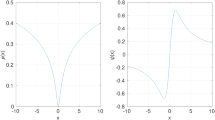Abstract
In this paper, an automatic method for psoriasis image segmentation using neuro-fuzzy techniques is proposed. It can be used in a therapy evaluation system. Since the psoriasis is a chronic disease, it is important to track the condition of the patient to select a proper treatment. In our design, the psoriasis images are segmented into normal skin regions and abnormal regions automatically. The areas of each kind of regions of a patient at different points of time can then be estimated. This information can be used to give a quantitative measure of the progress of the treatment. The provided information can avoid the variation of the human factor in the evaluation procedure and can offer a objective index for the doctor to select the most suitable treatment for the patient. The essential techniques required include feature extraction and image segmentation (classification) methods. The two-dimensional histogram of the hue and saturation components of the color image and the fuzzy texture spectrum of the gray-level image are used as the feature vectors to locate the homogeneous regions. Then these regions are used to train the neuro-fuzzy classifier to obtain a more accurate segmentation. After the image is segmented into normal and psoriasis regions, the area of psoriasis regions can be easily calculated to obtain the information required for the therapy evaluation system. For comparison, a color clustering algorithm which was used to segment digitized dermatoscopic images is also implemented. In the experiments, the proposed approach provides better performance.
Similar content being viewed by others
References
T.P. Habif, Clinical Dermatology, The C.V. Mosby Company, second ed., 1990.
J.S. Taur and C.W. Tao, “Texture Classification Using a Fuzzy Texture Spectrum and Neural Networks,” Journal of Electronic Imaging, vol. 7, no. 1, 1998, pp. 29–35.
S. Abe and R. Thawonmas, “A Fuzzy Classifier with Ellipsoidal Regions,” IEEE Trans. on Fuzzy System, vol. 5, no. 3, 1997.
Jia-Lin Chen and Jyh-Yeong Chang, “Fuzzy Perceptron Neural Networks for Classifiers with Numerical Data and Linguistic Rules as Inputs,” IEEE Transactions on Fuzzy Systems, vol. 8,no. 6, 2000, pp. 730–745.
B. Gabrys and A. Bargiela, “General Fuzzy Min-Max Neural Network for Clustering and Classification,” IEEE Transactions on Neural Networks, vol. 11, no. 3, 2000, pp. 769–783.
M. Meneganti, F.S. Saviello, and R. Tagliaferri, “Fuzzy Neural Networks for Classification and Detection of Anomalies,” IEEE Transactions on Neural Networks, vol. 9, no. 5, 1998, pp. 848–861.
S. Pavlopoulos, E. Kyriacou, D. Koutsouris, K. Blekas, A. Stafylopatis, and P. Zoumpoulis, “Fuzzy Neural Network-Based Texture Analysis of Ultrasonic Images,” IEEE Engineering in Medicine and Biology Magazine, vol. 19, no. 1, 2000, pp. 39–47.
R. Thawonmas and S. Abe, “Function Approximation Based on Fuzzy Rules Extracted from Partitioned Numerical Data,” IEEE Transactions on Systems, Man and Cybernetics (Part B), vol. 29, no. 4, 1999, pp. 525–534.
L.X. Wang, Adaptive Fuzzy Systems and Control: Design and Stability Analysis, Prentice Hall, 1995.
J.S. Taur and C.W. Tao, “Face Detection Using Neuro-Fuzzy Classifier,” in Proc., International Symposium on Multimedia Information Processing, 1998, pp. 309–314.
J.S. Taur and C.W. Tao, “A New Neuro-Fuzzy Classifier with Application to On-Line Face Detection and Recognition,” Journal of VLSI Signal Processing Systems, vol. 26, no. 3, 2000, pp. 397–409.
P. Schmid, “Segmentation of Digitized Dermatoscopic Images by Two-Dimensional Color Clustering,” IEEE Trans. on Medical Imaging, vol. 18, no. 2, 1999.
Author information
Authors and Affiliations
Rights and permissions
About this article
Cite this article
Taur, J. Neuro-Fuzzy Approach to the Segmentation of Psoriasis Images. The Journal of VLSI Signal Processing-Systems for Signal, Image, and Video Technology 35, 19–27 (2003). https://doi.org/10.1023/A:1023379719594
Published:
Issue Date:
DOI: https://doi.org/10.1023/A:1023379719594




